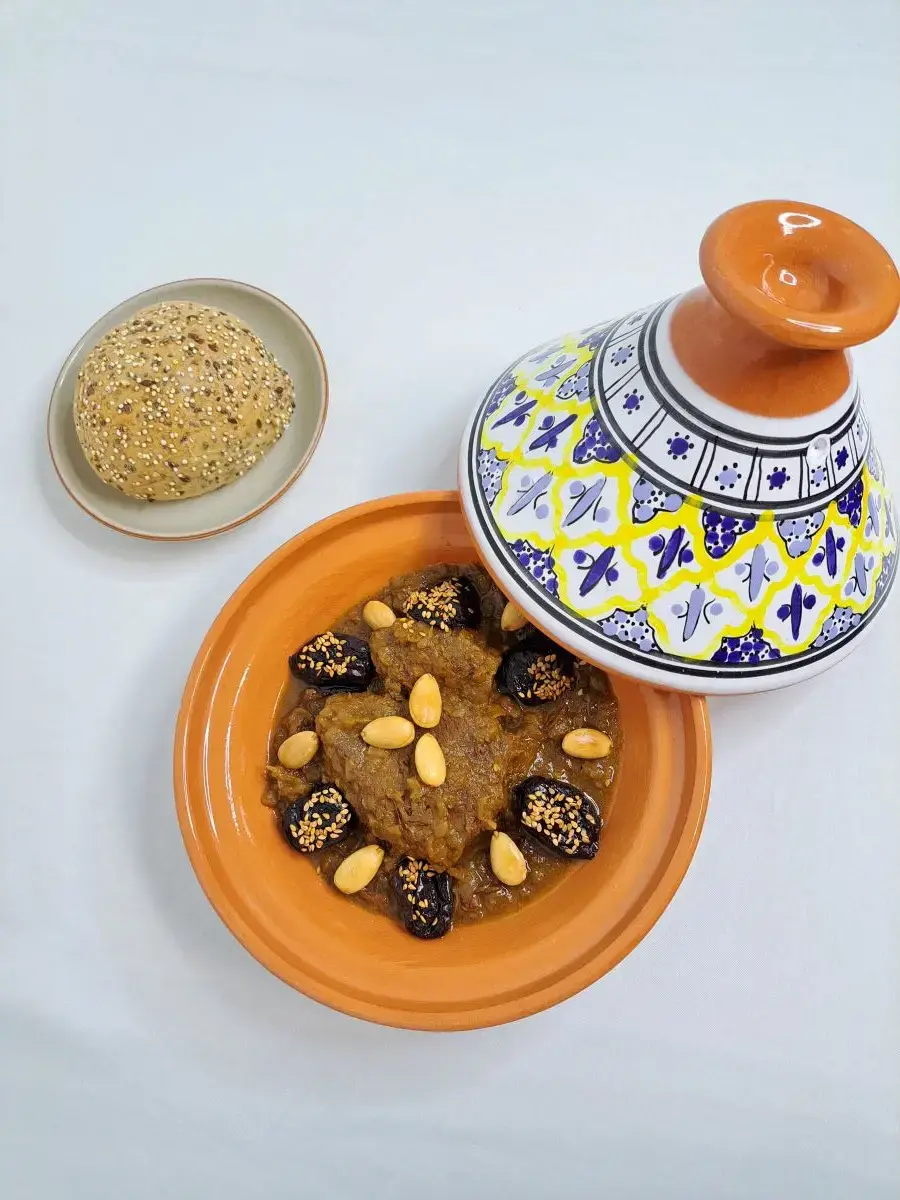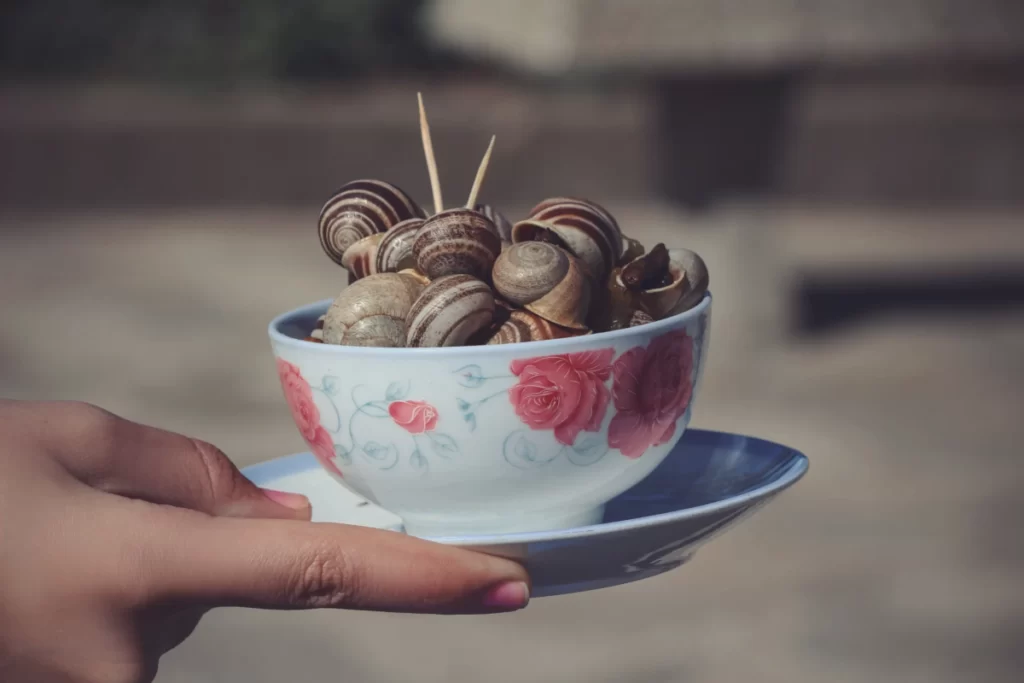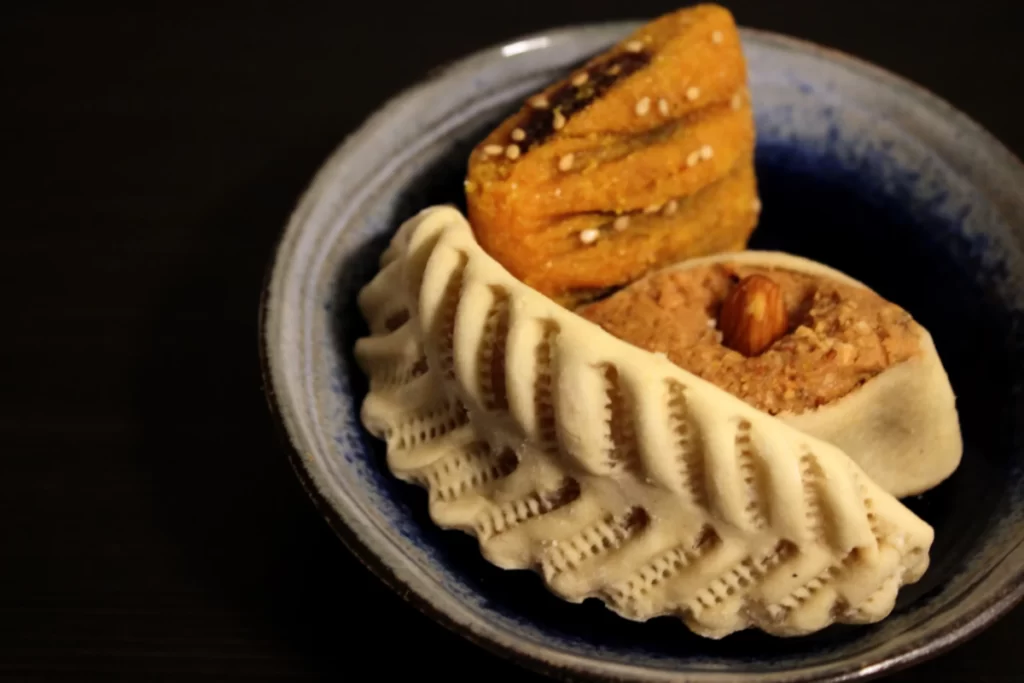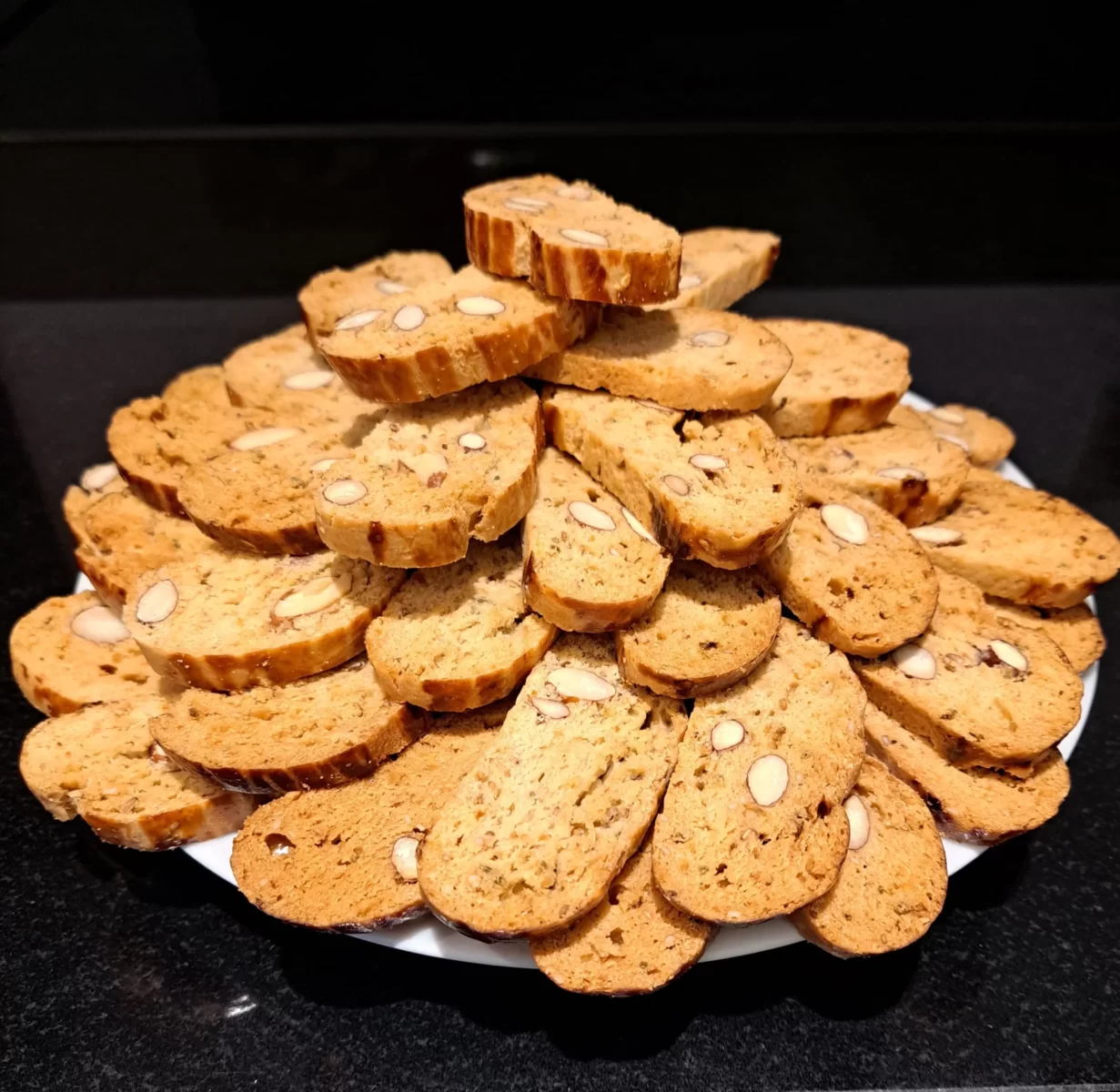Top 10 Most Popular Foods to try in Morocco
Moroccan cuisine is a vibrant blend of flavours and ingredients, with each region of the country having its own unique take on it. Whether it’s a succulent chicken tagine with green olives and preserved lemon, or fragrant pigeon pastilla pies with cinnamon and honey, or seafood pastilla pies, or seven-vegetable couscous, or sardines stuffed with chermoula (coriander, parsley, dill, garlic, cumin, paprika, a bit of chilli powder or ha-rissa paste), or snails in a spice-laden broth, there’s something for everyone to enjoy in this delicious cuisine.
The culture of Morocco also plays a role in its cuisine, with festivals such as Ramadan and Eid providing an opportunity for families and friends to gather around the table and share in a meal. This brings together the flavours of the country in a unique way, and is a tradition that continues to be celebrated today.
Explore the flavours of Morocco

1. Tagine
Tagines are used to make a variety of dishes, using meat, poultry, fish, vegetables, and herbs. Traditional tagine recipes may include ingredients such as dates, nuts, olives, honey, spices, and even dried fruits.
A tagine is also the name of the clay cooking pot with conical lid that helps to keep steam and moisture inside, being a natural material makes it a healthy way for cooking. It is also naturally non-stick, and is a good choice for slow-cooking, as it retains heat well, allowing the flavours to develop and the ingredients to meld together. The best Moroccan restaurant will offer a variety of this classsic dish, usually accompanied by homemade bread, as it helps scoop it up and absorb any remaining juices.
Traditional Moroccan tagine examples

Chicken is marinated in garlic, ginger, pepper, saffron, herbs and preserved lemon and cooked in onions and olives. You can find this classic tagine everywhere and in every form in Morocco.

The lamb is slow cooked until tender in onion sauce (daghmira), a fragrantly reduced onion gravy with cinnamon, ginger, garlic, pepper and saffron.
Prunes or apricots are cooked and caramelized before being topped off with toasted sesame seeds and served with fried almonds.
Fish Tagine:
This tagine combines any fish, tomatoes, carrots, potatoes, peppers, chermoula (coriander, parsley, dill, garlic, cumin, paprika, a bit of chilli powder or harissa paste).
2. Couscous

Couscous is a traditional Moroccan dish that is virtually exclusive to Fridays, where Moroccan families gather to make and share this weekly ritual. There are various kinds of couscous, with the most popular dish made of semolina granules of durum wheat and incorporating 7 vegetables, namely pumpkin, courgette, carrots, potatoes, turnips, cabbage, fresh broad beans or chickpeas, tomatoes, and onions.
To achieve an authentic taste, the couscous should be steamed multiple times over a pot of simmering meat with vegetables, and served with extra broth on the side.
The couscous is presented on a large platter, with the meat in the centre and the vegetables arranged around the platter. It is then drizzled with the broth for added moisture.

Pastilla is the most popular Moroccan dishes, often served at important celebrations such as weddings, baby showers… There are mainly two types of pastilla, a sweet and savoury pastilla with pigeon or chicken, and the second one is made of fish and seafood.
Chicken pastilla’s filling consists of chicken that has been cooked to perfection with onions, eggs, and spices such as saffron, cinnamon, gum Arabic, honey, almonds, and orange blossom water. This is then wrapped in warqa, a thinner version of filo pastry and baked in the oven. It is decorated with iced sugar and cinnamon or honey and almond flakes and enjoyed warm.
4. Harira Soup

Harira is a traditional Moroccan sour soup that has a thick texture, it is made with tomato sauce, onions, celery, coriander, parsley and spices. It’s commonly consumed during the month of Ramadan to break the fast, and enjoyed with dates, chebakia (small sesame-based cookies) and lemon.
The combination of a sour soup and a sweet chebakia is an irresistible combination, as the contrasting flavours balance each other perfectly. The sourness of the soup is cut by the sweetness of the chebakia. This blend of flavours and textures creates an unforgettable experience that will keep your taste buds tingling.
5. Stuffed Sardines
Morocco is the world’s leading exporter of sardines, making it an integral part of the Moroccan diet, of all walks of life.
Stuffed fried sardines are one of the most classic examples of Moroccan street food. The sardine filets are sandwiched together with a layer of chermoula. An additional layer of the same mix is then added for extra flavour before the fish is dipped in flour and fried in a pan. This is usually eaten with lentils’ stew and Moroccan salad.
6. Zaalouk
Zaalouk is a popular Moroccan cooked salad consisting of grilled aubergines, and tomatoes with garlic, peeled and chopped into small pieces and then sauteed in olive oil with a generous amount of coriander, cumin, paprika, and chilli.
This simple vegan dish can be served as a side dish or salad, either hot or cold, it is best enjoyed with some bread.
7. Snails in a spice-laden broth

Experiencing a Moroccan snail dish known as “babbouche” is a must for any one visiting especially, Jemaa al-Fnaa in Marrakech or anywhere you visit in Morocco.
Snail soup is a a popular street food, it is one of the nutritious and comforting meal that is especially favoured during the winter. It is cooked by boiling the snails in a pot with hot water, salt, and an assortment of herbs and spices, including aniseed, lavender, tea leaves, liquorice root, gum Arabic, orange peels, pepper, thyme, rosemary, sometimes more than 15 seasonings in total. After it is ready, the snails are served in individual bowls with its broth.
To enjoy snail soup, you’ll need a toothpick to extract the snails from their shells, and a spoon for sipping the flavourful broth. This delicacy is believed to have medicinal properties, such as reducing the symptoms of rheumatism and colds.
8. Gazzelle Horns

Gazelle horns are a classic Moroccan dessert that feature a sweet almond paste interior flavoured with orange blossom and encased in a thin, flaky pastry called warqa.
9. Briwat
These traditional Moroccan Ramadan triangular pastries are made of a thin pastry stuffed with an almond-based mixture. They are drizzled with honey to give them a sweet and delicious finish.
They come with different fillings like chicken and cheese, seafood, minced meat and vegetable or noodles.
10. Feqqas

The traditional Moroccan recipe of the sweet version is made of almonds, aniseeds, sesame seeds, raisons and orange blossom water. It is known as a double-baked biscuit, you can find them in every home, it is usually enjoyed with a glass of mint tea or a cup of coffee.
The sweet Feqqas can be made with different nut and seeds, the savory Feqqas are smaller and thinner, these come in different shapes and with different additions from olives, to harissa, to thyme to cheese… There must be something for everyone.


Your Moroccan recipes are truly amazing! I love how you take us on a culinary journey through your beautifully presented dishes that are bursting with authentic Moroccan flavors. Keep up the great work and thank you for sharing your delicious recipes with the world.
Thank you for the delicious samples!
Thank you Bermed.